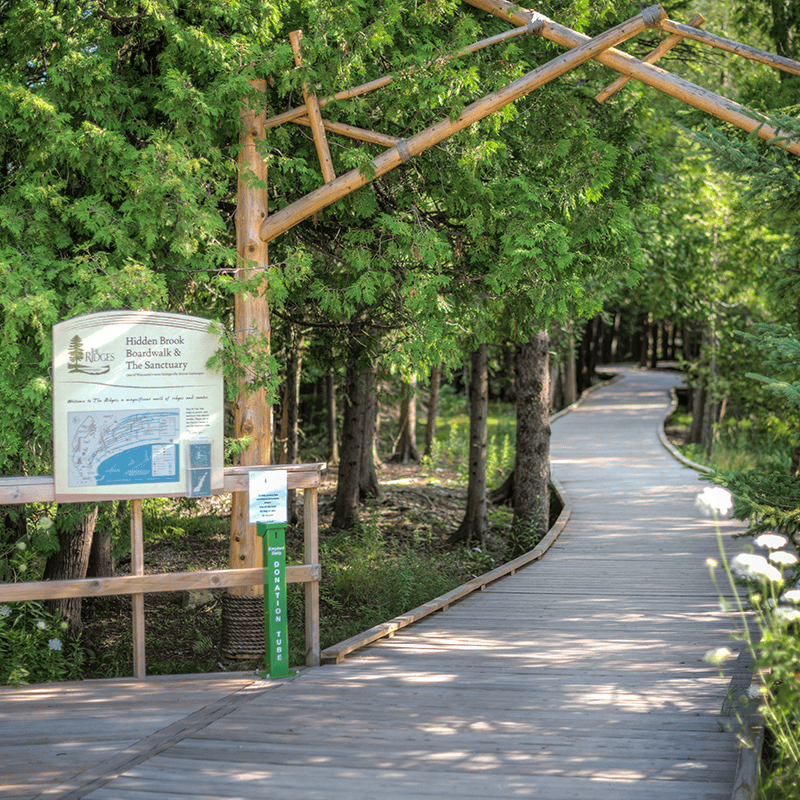Our Properties
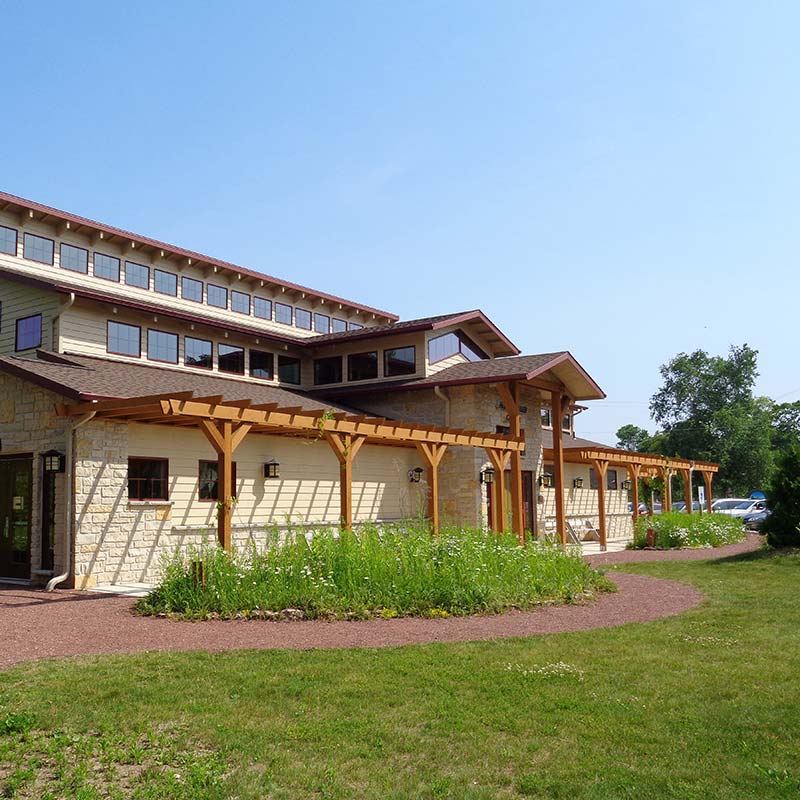
Cook-Albert Fuller Nature Center
The Cook-Albert Fuller Nature Center is the gateway to the Sanctuary. Built in 2015, it features a full exhibit on The Ridges’ cultural and natural history. The building is the first LEED (Leadership in Energy & Environmental Design) certified commercial building in Door County and received its LEED Gold certification in 2017.
The Nature Center also serves as a gathering place for the community and site for a variety of workshops, education classes, and user groups. As our founders envisioned, it is the place for volunteers, members, community leaders, businesses, visitors, and residents to gather in support of our mission of preservation, education and research.
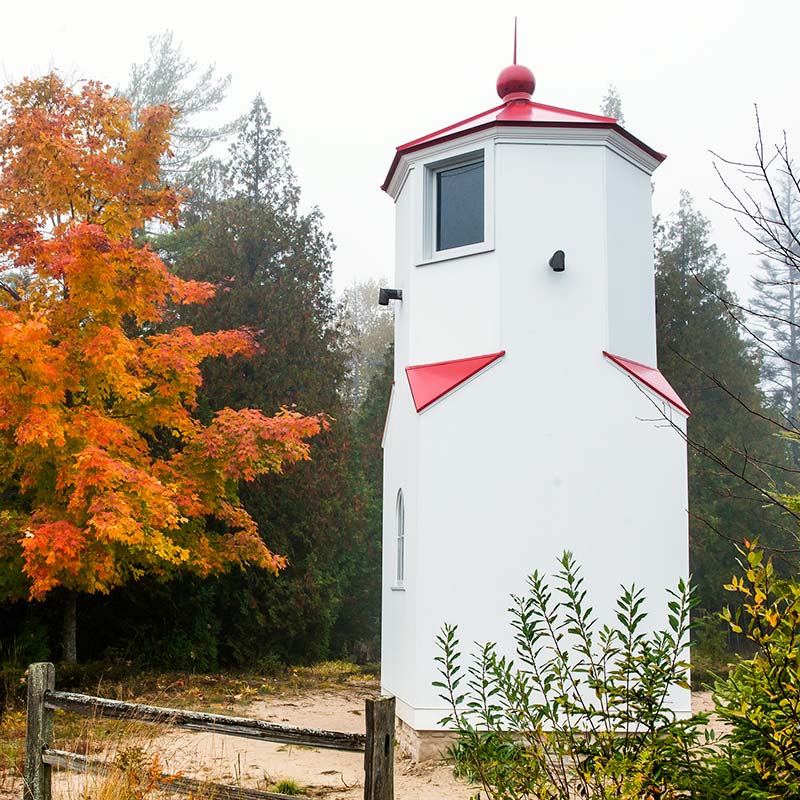
Become a Resident Docent
Spend a week at the beautiful Baileys Harbor Range Lights as a volunteer guide and honorary lighthouse keeper. May – October each year.
Baileys Harbor Range Lights
The iconic Baileys Harbor Range Lights were built in 1869 and listed on the National Register of Historic Places in 1989. The Upper and Lower Range Lights are the only lighthouses of this design that are still on range and functional as navigational aids.
The modest but enduring structures played a critical role in the history of Baileys Harbor and in the founding of The Ridges. At the time they were built, the range lights were considered a more effective way to keep ships off the treacherous reefs and shallows at the entrance to Baileys Harbor. To get “on range” from the water, a sailor would vertically align the white light in the Upper Range Light, which shone at a height of 39 feet above the water, with the Lower Range Light’s red beacon, which was fixed at 22 feet above the water.
In 1935, Door County Park Commission was granted permission to use the lighthouse acreage, except for the land immediately surrounding the two range lights, as a park. A few years later, the commissioners decided to clear some of the land for use as a trailer park. Residents of Baileys Harbor and the surrounding area, led by Albert Fuller, Curator of Botany at the Milwaukee Public Museum, formed The Ridges Sanctuary in 1937 to prevent the development and preserve the unique terrain.
Today Ridges Sanctuary staff, members and volunteers have become the new keepers of the lights, committed to preserving the structures and their cultural history.
Register at The Ridges Sanctuary Nature Center, 8166 Hwy 57 to tour or walk range light grounds. Open to the public, May-October, 10 am-3 pm, Mondays, Tuesdays, Thursdays, Fridays and Saturdays, and 11 am-2 pm on Wednesdays. Tours are free for members and $5 for non-members (included in day pass).
The Baileys Harbor Range Lights will close for the season on October 20.
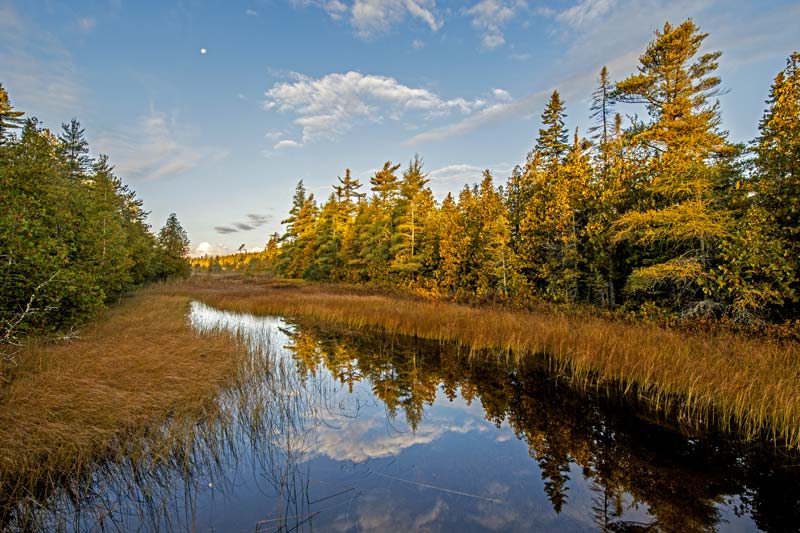
Heart of the Sanctuary
As you stroll through the Sanctuary trails, you’ll be walking on ridges that were formed by the receding shoreline of Lake Michigan. These ridges run parallel to water-filled wetlands called swales. Boardwalks allow you to safely cross these swales and enjoy the amazing views. Baileys Harbor is almost directly south-facing, which allows winds cooled by the lake to create the perfect conditions for the Sanctuary’s boreal forest that contains 11 species of conifers. During spring, the Sanctuary is covered with wildflowers and rare plant species that bloom throughout the summer. Keep an eye out for monarch butterflies, Hine’s emerald dragonflies, and over 60 bird species. In the fall, you’ll see spectacular warm colors, including magnificent tamaracks painting the swales in gold, and many fungi. Sanctuary trails are well-marked and easy to follow. Benches are placed throughout the property for quiet enjoyment of the ridges and swales.
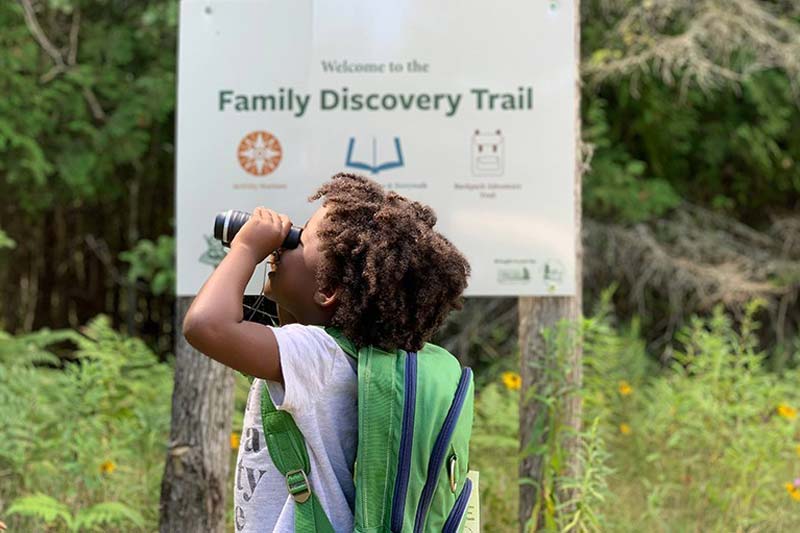
Family Discovery Trail
The Family Discovery Trail at The Ridges Sanctuary is designed to help children and families connect more deeply with nature. Research has shown that when children have the opportunity to experience nature with their parents, they develop positive environmental values, attitudes and behaviors that stay with them throughout their lives. The self-guided trail is designed to make the experience of exploring The Ridges Sanctuary engaging and educational for children and their families. The trail introduces children to the natural features of the Sanctuary through interactive discovery stations that encourage them to play, explore, imagine, ask questions, and seek additional information about the environment around them. Families can choose to travel the trail on their own or use The Ridges Family Discovery Trail Guide to enhance their outdoor adventures. The Family Discovery Trail is part of The Ridge’s ongoing dedication to environmental education and inspiring every generation to commit to conservation, stewardship and responsible enjoyment of natural resources. Open May – October.
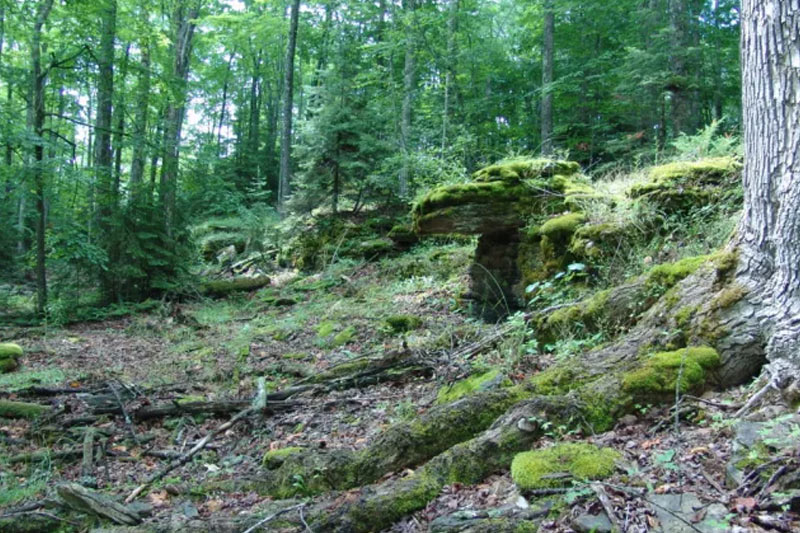
Appel’s Bluff
The over 100 acre property is a geologically unique addition to The Ridges. The edge of the bluff and old Lake Michigan shorelines are fascinating features. At one time, the land was likely an island; as water inundated the whole area. Today the property features dense lowland cedar forest with ephemeral ponds and wetlands in its southern portion and upland forests of maple and birch in the middle. A meadow area is going through ecological succession. This diversity provides opportunities to see a variety of habitats during a moderately easy hike. Open May – October.
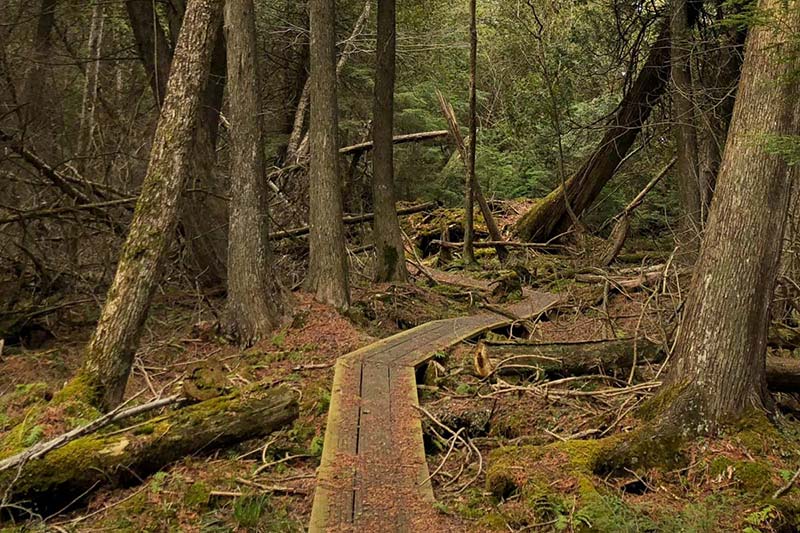
Logan Creek
Situated along the north shore of Clark Lake, Logan Creek features a northern wet-mesic forest dominated by white cedar and black ash. The canopy associates include yellow birch, balsam fir, hemlock, and white pine. Logan Creek is a 5.4 mile-long stream that flows southeast from Lost Lake and empties into Clark Lake. The creek is designated an Outstanding Water Resource and supports a state-endangered plant. The area is home to various bird species such as ovenbird, red-eyed vireo, black-throated green warbler, eastern wood-pewee, great crested flycatcher, rose-breasted grosbeak, and hermit thrush.
